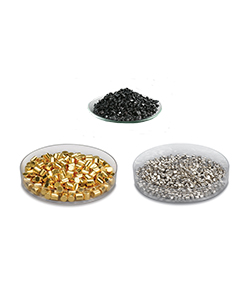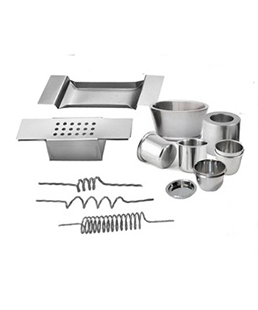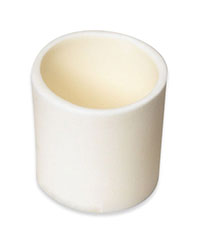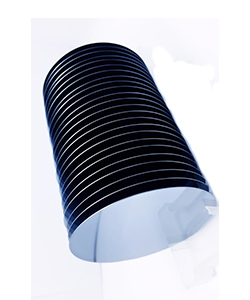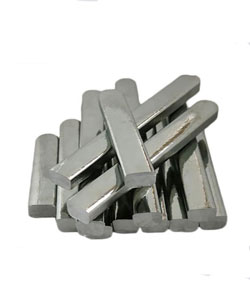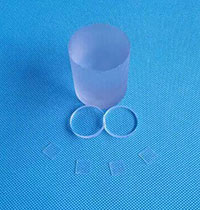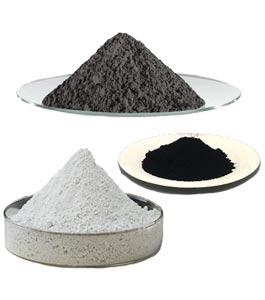 +86-731-89578196
+86-731-89578196
 [email protected]
[email protected]
- Home
- Our Company
-
Products
Sputtering Targets
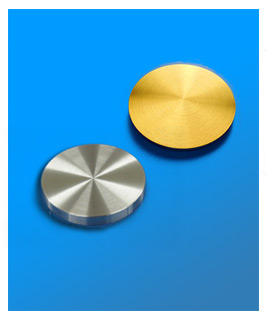
- Industries
- Blog
- FAQ
- Contact Us
Sputter Coating Explained: Key Benefits, Applications & Target Solutions
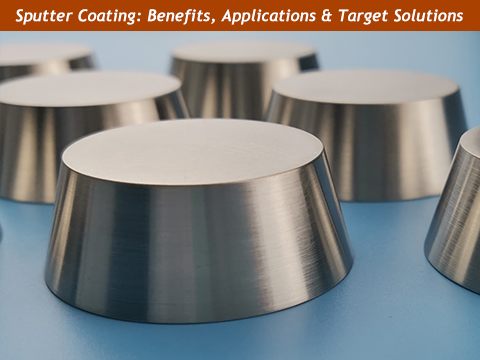
Introduction to Sputter Coating
Sputter coating is a high-tech method used to apply very thin layers of material—like metals or oxides—onto the surface of another object. It’s widely used in industries like electronics, optics, medical devices, and aerospace to improve surface performance, durability, and function.
The process happens in a vacuum chamber where atoms from a solid material, called a sputtering target, are ejected and deposited onto a surface. This creates a smooth, uniform, and reliable thin film. It’s perfect for projects that need high precision and purity.
For example, your phone screen likely has several layers of coatings applied using sputter coating. These layers can improve touch response, reduce glare, and prevent scratches—all while being nearly invisible.
At AEM Deposition, we manufacture the sputtering targets that make this possible. Our products help researchers, engineers, and manufacturers around the world build better, more advanced technology.
Sputter coating is more than just a surface treatment—it’s a critical part of modern product innovation.
How Sputter Coating Works
Sputter coating might sound complex, but the basic idea is simple: it’s a process that uses energy to turn a solid material into a thin, even coating on another surface.
Here’s how it works:
Everything starts inside a vacuum chamber, where the air is removed to keep the environment clean and controlled. Inside this chamber, there are two main parts: a sputtering target (the material you want to coat with) and a substrate (the surface you want to coat).
A gas—usually argon—is pumped into the chamber. When a high voltage is applied, the argon gas turns into a plasma. This plasma is full of energized particles that rush toward the sputtering target. When these particles hit the target, tiny atoms are knocked off.
These atoms travel across the chamber and settle evenly onto the substrate, creating a thin film layer.
It’s a bit like spray painting at the atomic level—only much cleaner, more precise, and done in a vacuum.
One of the great things about this process is how accurate and consistent it is. You can control the thickness of the film down to just a few nanometers (that’s thousands of times thinner than a human hair!). This makes sputter coating ideal for building advanced electronics, sensitive optical layers, or even medical implants where quality and performance matter.
There are also different types of sputtering—like DC, RF, and magnetron sputtering—that are used depending on the type of material and the desired outcome. But they all follow the same basic idea: knock atoms loose and coat a surface with them.
At AEM Deposition, we design our sputtering targets to perform perfectly under these conditions. We understand the challenges involved and offer reliable materials that help you get consistent, high-quality coatings every time.
Benefits of Sputter Coating
Sputter coating isn’t just a high-tech process—it offers real, practical advantages for manufacturers, engineers, and researchers.
Here are some of the key benefits:
High Precision and Control
Sputter coating allows you to apply films that are incredibly thin and accurate—often just a few nanometers thick. This is ideal for products that require exact material thickness, like semiconductors or optical lenses.
Uniform and Smooth Coatings
The process creates very even and consistent layers across the surface. This is critical when coating small or detailed parts where flaws or unevenness could affect performance.
Strong Adhesion
Thin films created by sputtering bond tightly to the surface. This makes them more durable and long-lasting, even under heat, wear, or moisture.
Wide Material Range
You can use a variety of materials for coating—metals like gold, silver, titanium, or oxides like indium tin oxide (ITO). That means you can create coatings for electrical, optical, or protective purposes.
Clean and Contamination-Free
Because it’s done in a vacuum, the process is extremely clean. This helps achieve high-purity coatings, which is essential in fields like microelectronics or medical devices.
Environmentally Friendly
Compared to some chemical coating methods, sputter coating is cleaner, with fewer hazardous byproducts.
In short, sputter coating gives you control, quality, and flexibility. It’s a go-to method when performance matters most.
At AEM Deposition, we help clients unlock these benefits by supplying high-quality sputtering targets made for demanding environments. Whether you're working on electronics, optics, or next-gen technology, our materials are built to deliver results.
Applications of Sputter Coating
Sputter coating plays a key role in many industries, often behind the scenes. It’s used to improve surfaces, enhance performance, and enable new technology. From your smartphone to space satellites, sputter coating is everywhere.
Here are some of the most common and important applications:
Electronics and Semiconductors
One of the biggest users of sputter coating is the electronics industry. It’s used to deposit thin layers of metal and oxide materials onto chips, circuit boards, and displays. These coatings help conduct electricity, manage heat, and protect sensitive components.
Optical Devices
Sputter coating is used to make anti-reflective coatings, mirror surfaces, and filters in lenses, cameras, glasses, and laser systems. The thin films can control how light passes through or reflects off the surface—essential for high-performance optics.
Medical Equipment and Implants
In healthcare, sputter coatings are applied to tools, implants, and devices to improve biocompatibility, resist corrosion, or add antimicrobial properties. For example, titanium coatings on implants make them more body-friendly and longer-lasting.
Solar Panels and Renewable Energy
Sputter-coated materials are used in thin-film solar cells to boost energy conversion efficiency. These coatings help manage light absorption and electrical conductivity, making solar panels more powerful and reliable.
Aerospace and Defense
From satellite sensors to infrared optics, sputter coating provides protective, functional, and lightweight films for demanding aerospace and military environments. These coatings must perform under extreme conditions—something sputter technology handles well.
Research and Development
Universities and labs use sputter coating in materials science, nanotech, and other research fields. It allows scientists to study new materials, test ideas, and create prototypes with high accuracy.
No matter the industry, sputter coating adds value by improving product performance, durability, and functionality. It’s not just a coating—it’s a key part of how modern technology is built.
At AEM Deposition, we provide sputtering targets tailored to these industries. Our clients trust us for consistency, quality, and custom solutions that meet their exact needs.
Common Materials Used in Sputter Coating
The power of sputter coating lies in its ability to apply a wide variety of materials as thin, functional layers. The material used for the coating comes from a solid piece called a sputtering target—and choosing the right one is crucial for getting the desired results.
Here are some of the most commonly used sputtering materials:
Gold (Au)
Used in electronics and optics, gold offers excellent conductivity and resistance to oxidation. It's often used in high-end microchips and medical devices.
Silver (Ag)
Silver is known for its high electrical and thermal conductivity. It's commonly used in solar panels, touchscreens, and RFID applications.
Titanium (Ti)
This strong, lightweight metal is widely used for protective coatings, especially in aerospace, medical, and industrial equipment. It also forms useful compounds like titanium nitride (TiN), which is hard and wear-resistant.
Aluminum (Al)
Aluminum is used for reflective coatings, especially in optics and displays. It’s lightweight, affordable, and forms a protective oxide layer.
Chromium (Cr)
Often used as an adhesion layer, chromium helps other coatings stick better to surfaces. It's also valued for its hardness and corrosion resistance.
Indium Tin Oxide (ITO)
A transparent and conductive oxide, ITO is key in making touchscreens, LCDs, OLEDs, and solar cells. It combines clarity with electrical functionality.
Nickel (Ni), Molybdenum (Mo), and Tungsten (W)
These metals are used in semiconductors, resistive coatings, and thermal barriers. They perform well in harsh environments and at high temperatures.
Oxides, Nitrides, and Alloys
Materials like silicon dioxide (SiO₂), titanium nitride (TiN), or aluminum oxide (Al₂O₃) are used when specific chemical or optical properties are needed. Alloys like NiCr or TiAl can be customized for particular functions.
The choice of material depends on the job. Some coatings need to conduct electricity. Others must block light, resist heat, or prevent corrosion.
At AEM Deposition, we offer a wide range of sputtering targets made from these and other materials. We supply both pure elements and custom alloys to meet the unique demands of your application. Whether you're working in research or high-volume manufacturing, our materials are trusted for their purity, consistency, and performance.
Types of Sputtering Targets We Offer
At AEM Deposition, we specialize in supplying high-performance sputtering targets made from pure metals, oxides, and engineered alloys. These materials are essential in many high-tech industries, offering excellent performance at a more practical cost.
Here’s an overview of the types of sputtering targets we offer:
Pure Metal Targets
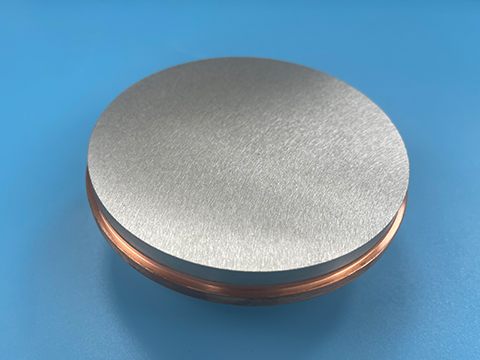
We manufacture targets from a wide range of non-precious pure metals. These are ideal for applications in semiconductors, optics, and industrial coatings.
Some of our most in-demand options include:
- Titanium (Ti) Sputtering Target – Used in hard coatings, optical films, and biomedical devices
- Chromium (Cr) Sputtering Target – Great for adhesion layers and decorative coatings
- Aluminum (Al) Sputtering Target – Common in display tech, optics, and electronics
- Nickel (Ni) Sputtering Target – Used in barrier layers and resistive films
- Molybdenum (Mo) Sputtering Target – Offers high thermal stability, perfect for solar and electronic devices
- Tungsten (W) Sputtering Target – Known for its strength and high melting point
All targets are available in various shapes, purities, and sizes to match your equipment and application.
Oxide and Ceramic Targets
Oxide targets are critical in industries like optics, energy, and displays. We produce a range of ceramic and oxide-based sputtering targets, including:
- Indium Tin Oxide (ITO) – Transparent and conductive, perfect for touchscreens and displays
- Aluminum Oxide (Al₂O₃) – Used in insulating layers and protective coatings
- Zinc Oxide (ZnO) – Key in transparent conductive films and sensors
- Titanium Dioxide (TiO₂) – Often used in photocatalysts and anti-reflective coatings
These targets are carefully processed to ensure homogeneity, density, and crack resistance during sputtering.
Alloys and Composite Targets
Need more tailored performance? Our custom alloy targets are engineered to meet specific electrical, optical, or thermal properties.
Popular combinations include:
- Nickel-Chromium (NiCr) – Widely used in thin-film resistors
- Titanium-Aluminum (TiAl) – A balanced choice for hardness and conductivity
- Aluminum-Zinc Oxide (AZO) – A cost-effective alternative to ITO for transparent electrodes
We can also create multi-component or doped targets for advanced applications. Just tell us your specifications, and we’ll build a solution that fits.
Industries We Serve
At AEM Deposition, our sputtering targets power innovation across a wide range of industries. From everyday electronics to advanced aerospace systems, our materials help manufacturers and researchers produce high-quality thin films with confidence.
Here’s a closer look at the key industries we support:
Semiconductors and Electronics
We supply sputtering targets used in the production of microchips, sensors, printed circuit boards (PCBs), and resistive layers. These applications demand precision and purity, and our materials deliver reliable, consistent results. Whether you’re manufacturing high-frequency devices or developing cutting-edge MEMS, we provide the right materials for the job.
Popular materials: Titanium, Nickel, Chromium, NiCr alloys
Display and Optoelectronics
Modern displays, such as OLEDs, LCDs, and touchscreens, rely heavily on thin films. Our oxide and ceramic targets are used in transparent conductive layers and optical coatings that enhance clarity, brightness, and durability.
Popular materials: Indium Tin Oxide (ITO), Aluminum Oxide, Zinc Oxide, AZO
Solar Energy and Photovoltaics
In solar cell production, sputter coatings are used to improve light absorption, conductivity, and efficiency. We work with solar companies and R&D labs to supply materials that support next-generation energy technologies.
Popular materials: Molybdenum, Aluminum, AZO, ZnO
Optics and Coating Services
Companies in the optics sector use sputtering targets to deposit anti-reflective coatings, mirror finishes, and hard protective layers on glass and plastic surfaces. These coatings improve performance in cameras, lenses, eyewear, and scientific instruments.
Popular materials: Titanium Dioxide, Aluminum, Chromium
Medical Devices and Tools
In the medical field, coatings enhance biocompatibility, corrosion resistance, and device longevity. Our high-purity metal targets support the production of surgical instruments, implants, and diagnostic tools.
Popular materials: Titanium, Aluminum Oxide
Aerospace and Defense
For aerospace and defense, durability is non-negotiable. Our sputtering targets are used in radar systems, IR optics, protective barriers, and space components that must perform in extreme environments.
Popular materials: Tungsten, Molybdenum, Titanium
Universities and Research Institutions
We’re proud to support researchers working on everything from nanotechnology to material discovery. Our flexible order sizes and custom formulations make us a trusted partner for R&D labs and academic institutions.
Conclusion
Sputter coating is a smart and reliable way to improve the surfaces of many products—making them stronger, more functional, and longer-lasting. It’s widely used in electronics, solar energy, optics, and medical devices.
To get great results, you need the right materials. That’s where AEM Deposition comes in. As a trusted sputtering target supplier, we offer high-quality materials, custom options, and expert support to match your exact needs.
Whether you're working on a new idea or scaling up production, we're here to help you succeed with dependable thin-film solutions.





